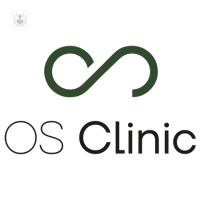Perthes disease
Mr Shobhit Verma - Paediatric orthopaedics
Created on: 07-05-2016
Updated on: 10-16-2023
Edited by: Jay Staniland
What is Perthes disease?
Perthes disease, also known as Legg–Calvé–Perthes disease (LCPD), is a condition affecting children's hip joints, most commonly from ages four to ten. It is a rare condition that affects the blood supply to the femoral head (the ball of the hip joint), which can lead to the death of bone cells, causing it to collapse and deform.
Perthes disease is more common in boys than girls. The cause is not clear, but is believed to be genetic, but could be caused by some environmental factors. A specialist paediatric orthopaedic surgeon will diagnose and treat the condition.
Prognosis of Perthes disease
In the vast majority of cases, the femoral head grows back normally again; however, recovery can take up to two or more years. The main risk associated with this condition is that the femoral head becomes misshapen and leads to a stiffening of the joint. The main factors affecting the success of treatment are: gender (boys have a higher chance of successful healing compared to girls), age (the older they are, the harder it will be to reshape the hip), and severity of the condition.

What are the symptoms?
The main symptoms of Perthes disease include:
- Limping: the child may develop a noticeable limp, especially after periods of rest.
- Hip pain: the affected child will feel pain or stiffness in their groin or knee after physical activity. The pain may initially be mild, but can progress over time.
- Limited range of motion: the child may have a reduced range of motion, and may have difficulty moving the hip joint. The child may have trouble opening their legs or rotating the affected joint inwards. In the advanced stage of the disease, the child will change their posture and gait to avoid putting a strain on the diseased joint.
- Muscle atrophy: muscles around the hip joint may weaken and atrophy due to lack of use.
How the disease progresses can differ from child to child. In some cases it can lead to long-term joint problems, while in otheres, the hips may heal naturally over time.
How is Perthes disease diagnosed?
An accurate diagnosis can be formulated by doing:
- MRI scan
- Ultrasound scan
- X-rays
- Bone scintigraphy.
What causes Perthes disease?
The underlying cause of LCPD is still unknown. It has been speculated that the impairment of blood supply to the femoral head caused by an obstructed artery may lead to this condition. There are, however, ascertained risk factors such as maternal smoking during pregnancy, low birth weight, short stature, and delayed skeletal and overall physical maturity.
How is it treated?
There is no specific treatment for Legg–Calvé–Perthes disease; as such, the specialist will evaluate each individual case to determine the best treatment option. Usually, treatment options consist of conservative treatment (constant monitoring, physical therapy, using a hip abduction brace, and bed rest) or surgery. Surgery offers more immediate benefits than conservative treatment: the bone is cut and repositioned to keep the femoral head snug within the acetabulum, swiftly reducing the pressure on the hip.
Regular follow-up with the paediatric surgeon is crucial to monitor the progress of the condition, and adjust the treatment plan as required. With the appropriate care and attention, children with Perthes disease can go on to live active, healthy lives.
Which doctor should I talk to?
If your child has LCPD, you should see a paediatric orthopaedic specialist.



